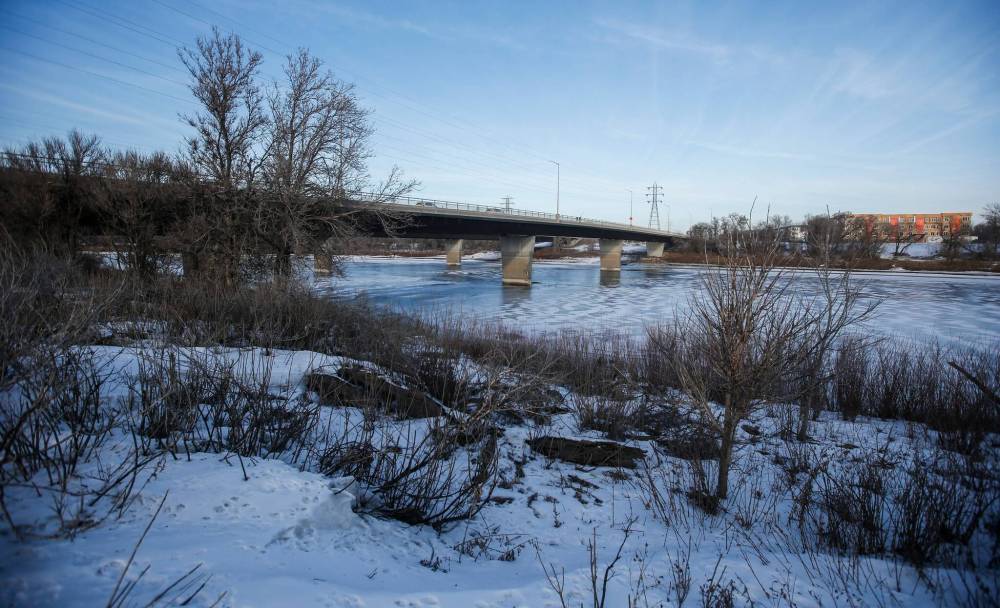Who’s accountable for sewage mess?
Advertisement
Read this article for free:
or
Already have an account? Log in here »
To continue reading, please subscribe:
Monthly Digital Subscription
$0 for the first 4 weeks*
- Enjoy unlimited reading on winnipegfreepress.com
- Read the E-Edition, our digital replica newspaper
- Access News Break, our award-winning app
- Play interactive puzzles
*No charge for 4 weeks then price increases to the regular rate of $19.00 plus GST every four weeks. Offer available to new and qualified returning subscribers only. Cancel any time.
Monthly Digital Subscription
$4.75/week*
- Enjoy unlimited reading on winnipegfreepress.com
- Read the E-Edition, our digital replica newspaper
- Access News Break, our award-winning app
- Play interactive puzzles
*Billed as $19 plus GST every four weeks. Cancel any time.
To continue reading, please subscribe:
Add Free Press access to your Brandon Sun subscription for only an additional
$1 for the first 4 weeks*
*Your next subscription payment will increase by $1.00 and you will be charged $16.99 plus GST for four weeks. After four weeks, your payment will increase to $23.99 plus GST every four weeks.
Read unlimited articles for free today:
or
Already have an account? Log in here »
Hey there, time traveller!
This article was published 29/02/2024 (652 days ago), so information in it may no longer be current.
Yet again, the Red River and Lake Winnipeg are taking the hit for a lack of contingency planning.
What we know is that hundreds of millions of litres of raw sewage was released into the river as it winds its way around St. Vital and Crescent Drive Parks and ultimately makes its way through the city to the lake. The leak, which started Feb. 8, spewed untreated waste at unprecedented rates causing desperate city officials to plea for a reduction in water use from the sprawling suburbs of Fort Garry.
Never before has a such a request been made of citizens and it should be a harbinger of more to come. Simply, infrastructure is not keeping up with development. Not running your dishwasher during peak hours will not solve the problem.

JOHN WOODS / FREE PRESS FILES
The Fort Garry Bridge in Winnipeg, the site of the latest major sewage spill into the Red River.
Construction of new sewage infrastructure at the Fort Garry bridge was initiated to replace an aging, overwhelmed network, which was evident in the last few years by the aroma experienced in the vicinity. The pipes built in the 1970s were found faulty in November during an inspection. A leak occurred in one and apparently the other one, which was in poor condition, was relied upon to contend with the tide of excrement.
In situations such as this, there is hope or there is careful planning. In this instance, city officials relied on hope and a dodgy pipe to prevent an environmental catastrophe. Although there were several months to prepare a stopgap measure, no such plan was developed. Spills have occurred repeatedly over the years due to failure of pumps or delays in retrieving them.
Once the bypass system was operating on Feb. 17, two pumps were put into service to handle the capacity. As Murphy’s law goes, one of the pumps had issues and the interim system failed to cope. This error-filled misadventure has resulted in another year of devastating pollution well before spring runoff.
Considering 27.5 billion litres of sewage leaked into the river only a couple of years ago, one would assume that backup plans would be made to prevent another disaster.
Surely planning for worst-case scenarios would have provided a failsafe solution to failing pipes and pumps.
At some point there needs to be accountability, as Winnipeg has consistently faced these calamities with a collective shrug of the water and waste department’s shoulders. An admission that an inaccurate assessment of the durability of the pipes does not justify what is clearly a lack of preparation and foresight for unplanned events. Mayor Scott Gillingham needs to get to the bottom of these regular blunders and hold those in charge answerable.
Provincial and federal governments have environmental laws in place to provide consequences for massive sewage spills, and they are very clear, with substantial penalties.
The Fisheries Act forbids any discharge of a deleterious substance into water frequented by fish, and sewage fits that description. The provincial environment minister has promised an investigation because local environment laws also prohibit these releases. Environment Minister Tracy Schmidt stated “water is life” and went on to say we need to keep our rivers and lakes healthy and safe.
We will need more than righteous pronouncements to put a stop to the gaffes, and the province and the federal government will need to ante up for changes and repairs to a crumbling system.
It is clear the reluctance to enforce environmental law at all levels has more to do with politicians who are unwilling to assist the municipality in funding sewers.
Year after year, the city breaks the law, and the province sees fit to exempt them from penalties.
Perhaps it is time to slap a huge warranted fine on the city so that pollution is taken seriously.
In the meantime, the Jacob’s Engineering master plan for combined sewers completed in 2019 needs revision; projections for growth, precipitation calculations and the state of our infrastructure are as antiquated as the pipes themselves.
Climate change stands to bring with it a level of unpredictability that will require revised calculations. A new plan which recognizes this, adequate resources and accountability of officials are necessary to right this ship.
The waterways of Manitoba deserve our respect and care.
Dave Taylor has drawn attention to the pollution of rivers in Manitoba for several decades and is a regular contributor to the Winnipeg Free Press. https://in wpgsewage.wordpress.com







